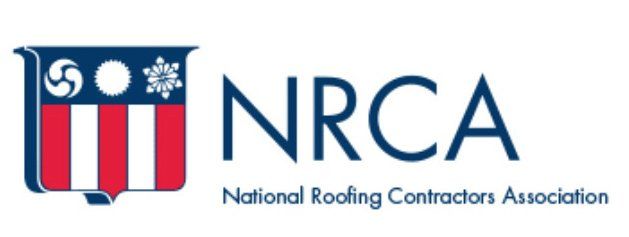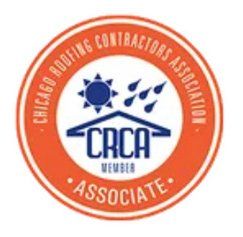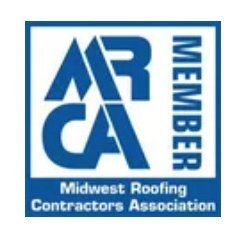Why Split Face Block Parapets & Buildings Leak More
Than Other Types of Masonry Buildings
Construction is a complex science. From the foundation, to the parapet, successful leak and moisture intrusion control requires the right combination of materials, craftsmanship, flashing - metal flashing and self-adhered flashing, masonry sealant and ventilation. WickRight passive ventilation, also known as parapet vents and vented flashing protects new construction, but is specifically designed to dry out existing masonry buildings that leak and have accumulated moisture in the brick and split face block walls and in the flat roof system.
Why Traditional and Modern Masonry Construction Materials Don't Mix
Traditional masonry materials are porous, but traditional construction methods provide continuous wicking and drying. While traditionally built buildings can have moisture issues, SERIOUS water and mold damage is more commonly found in buildings less than 20 years old and are constructed with Split Face Block (SFB), Concrete Masonry Units (CMU) and Mortar with Portland Cement. These buildings also typically have Renaissance stone or pre-cast concrete details.
Split Face Block is 8 times* more porous than stone or brick, so many professionally applied sealants only
REDUCE moisture absorption.
Why do builders use Split Face Block and CMU?
Until recently, the construction industry was not aware of the issues caused by Split Face Block or CMU. Building with it saves money on labor and materials compared to common brick or stone. Unfortunately, repair and maintenance of these buildings can cost building owners, builders and architects, far more than was originally saved.
*From WTTW report on Issues with Split Face Block in Chicago
Traditional vs. Modern Masonry Construction Methods
Traditionally built masonry buildings have 3 masonry wythes with an air cavity in between each wythe, secured with lime mortar. Each wall adds strength and is a moisture barrier.
Lime mortar is autogenous. Wet lime mortar becomes runny, oozing into cracks, holes and pits in the wall. It is a natural waterproofing agent, re-sealing the building every time it rains. Modern mortar contains various levels of Portland Cement and is NOT self-healing. Moisture migrates thru the mortar, as well as the CMU from the exterior side to the interior side or the exterior wall to the interior wall via mortar bridges, see illustration below.
Single wythe Split Face Block construction is extremely problematic. The block absorbs water which migrates from the exterior to the interior effortlessly. Once the block is saturated, the open core acts as a water vessel, storing water until homeostasis is reached, then the water migrates to the exterior and, unfortunately to the interior of the building.
Articles below were written by William Decker - Decker Home Services
If your home has leaks and you'd like an inspection by an impartial party, call Will Decker - 312-720-1467
He was inspecting wet buildings in Chicago and the surrounding area long before WickRight was invented in 2012.
Will knows his way around split face block and all other masonry construction.
Split Block CMU Construction
I had a client call me the other day. Town home style house in the northwest side of Chicago. Originally built in 2006. Client stated that house was never finished, structure, roof, interior framing, electric, plumbing done, but no drywall or insulation. I did a permit search and there are no records of permits at that address. And the house was constructed using 8″ textured single wythe CMU, also known as Split Faced Block. This type of construction has been an ongoing problem in this area since the mid 90s.
As it turns out, the house was finished and occupied, but it suffered from such water infiltration problems, along with the proverbial dreaded mold problems, that the owners fled and the house was gutted of all the drywall, insulation and anything else they could think of but they left the electrical and plumbing.
I hope this article will help others to understand this type of construction, what the problems inherent in single wythe masonry construction and the proper construction methods that are needed so the house does not become a mold encrusted mess. It will also demonstrate that sealing the exterior block, either with a penetrating sealer or elastomeric paint makes little difference when the masonry flashing is not done properly.
First off, the house did have the exterior painted with a water proofing type paint. Such paints, or ‘sealing’ as it has become known as, are usually elastomeric paints. You see them used all the time on Public Storage buildings. The theory is that sealing the exterior from water penetration will stop the water infiltration. As is typical with this ‘solution’, the paint was applied all over the exterior, including sealing up the weep wicks and lintel drainage spaces. Most building sealed like this, in my experience, wind up having the paint bubbling off as the moisture that managed to get in anyway tries to get out. It is actually locked in by the paint. Sealing is NOT a long term permanent solution to the problem. It also gives a false sense of security, at least until the levy finally breaks.
The front elevation of these buildings are usually not constructed of CMU, but instead are Stone veneer separating 4″ concrete block structure covered with a brick, stone or some other style of facade. In this case, the facade was 4″ Renaissance Stone, a cast, polished concrete product that has been recently used as a substitute for the traditional Chicago style of limestone. In this house, they attached a metal framed front stairway but only anchored it in the stone veneer. This caused the stone to separate from the house and cause the veneer to crack and fall off on the side of the house.
Rear Balcony / Porch No support posts.
The rear balcony was not much better. It was metal framed. but only supported by the ledger board being bolted through the CMU at the rear. The ledger was separating from the block and the interior bolt had a vary small washer, almost completely sucked into the block on the inside. Keep in mind that this house had no building permits that could be found, was originally built and sold in 2006 and had been lived in for at least a couple of years.
Trusses in block pockets
The interior displayed all the typical split faced block water intrusion problems. The engineered wooden trusses, top loaded, were inserted in pockets in the block and this support pocket was grouted shut. This is actually a requirement in Chicago building codes. Especially in a single wythe masonry wall, this means that any moisture in the masonry will wick into the truss, eventually rotting out the ends. Almost all of the metal truss gussets were rusted and there were water drip stains along all the walls. All the electrical conduit and boxes displayed rusting. The copper water supply piping and PVC drain piping were still in place and appeared to be in good condition.
No back damming on floor truss flashing
Where the trusses are supported by the masonry wall, there is supposed to be step flashing in the wall assembly, to block moisture from the truss ends and capture any moisture draining it out to the weep wicks. But, as is very typical, the flashing had no back damming. The flashing membrane was left to droop down on the interior of the wall. This allows water to also drain INTO the house, right above the hardwood flooring. So, if the client complains about buckling of the hardwood floors along the exterior walls, this is the cause.
The same errors were seen above the window and door openings. No back damming drooping flashing and no end damming. This has lead to EVERY window and door lintel in the entire house to be extensively rusted and delaminated. All of them must be replaced.
The real cause of the water intrusion is NOT through the exterior walls. I know that people who have purchased CMU wall detail these type of properties want a quick and easy solution. Humans are like that, always looking for an easy way out. That is why ‘sealing’ the block has been so popular. But the water does NOT enter through the sides, at least not to any significant amount. The (BULK OF THE) water enters single wythe CMU block walls not through the side, but through the top. I used to be a big proponent of sealing the block exterior, but over the years and many evaluations of these type of buildings have changed my mind. The water enters through the Parapet wall coping, no flashing on the top of the wall, through parapet wall coping that has not been flashed.
This was clearly evident in this house. The parapet wall was covered with a stone coping with no flashing beneath. There was evidence of water intrusion in the parapet wall below, with many areas of cracking, both at the mortar joints and through the block. I noticed this fact when I discovered that split block buildings that had pitched roofs (i.e., no parapet walls) never had any water intrusion problems. So, the real issue is one of poor (or non-existent) flashing, not the block itself. Granted, split block does absorb water more than other building materials and one should never build with single wythe style in Chicago, but there is hope for these type of buildings if they are either built properly, to begin with, or repaired by a licensed and qualified contractor who understands the cause of the problem and does not just want to do a quick ‘sealing the block’ job.
Our company also offers Split Block Certification. We inspect the property, recommend repairs and evaluate the repairs afterwards. If done properly, we issue a certification of the building (single and multiple family). We have evaluated more than 200 buildings like this and have never had a single complaint after the repairs. A new “Split-Block Certified” inspection program can ensure the homebuyers and sellers don’t get stuck.
Another Article written By William Decker, CMI
For the last 15 years or so, especially during the building boom of the early to mid 2000’s, there were a glut of new single-family and condominium buildings constructed in the Chicago area. Many of these condominium buildings utilized a newer exterior masonry product that is commonly called split faced block. This material looked like an 8″ thick cinder block, but had a rough face, making it look like stone. During manufacture, a complete 16″ block is “split” to form two 8″ pieces, each with a rough face. The finished product resembles rock-faced masonry in Richardsonian Romanesque houses popular in the mid-1880s.
Split faced block was commonly used as the exterior wall cladding on the sides and rear of single-family, 3, 6 and 8 unit condominium buildings, with the front of the buildings, usually, being covered with a brick or stone veneer. This concrete block was chosen by builders for a number of reasons, but the biggest one was cost. These factors include:
- Split faced block is inexpensive to buy.
- Being larger than a brick, therefore it is faster to install.
- This block is strong enough to use as a structural wall (i.e. a wall that actually supports the building) but also attractive enough to use as an exterior cladding wall at the same time. Because of this, the exterior walls were constructed only one block thick (single wythe), as opposed to the usual Chicago practice of 2 or 3 widths of masonry (multiple wythe wall assembly).
- The material could be installed by less experienced and less expensive workers.
Problems and Causes:
The problems we are commonly seeing with many split faced block buildings are the result of water intrusion. The symptoms can include water stains on ceilings and walls, warping and buckling hardwood floors, water dripping from exterior wall electrical outlets and light switch boxes, musty smells and mold formation. In severe cases, rotting of the structural floor, ceiling and roof members can lead to catastrophic collapse. It is important to realize that these are not the problem, they are merely the symptoms of the real problem which is water intrusion in the block. One building that I inspected displayed vertical plane cracking through the block from water freeze expansion. It was no longer structurally sound (right)! Many times, home owners will have the roof replaced or “patched” because they suspect roof leakage when the real problem is not the roof. The best solution is always to solve the primary issue (the water intrusion) before addressing the secondary symptoms.
The latest outgrowth of this problem is a general shunning of this type of building by the current owners and any prospective buyers. There are some Real Estate brokerages that will not even list for sale condominium units in a split faced block building. Condominium association members and owners find the value of their units collapsing. Some split block owners have chosen to simply abandon their property, preferring a foreclosure to having to spend more money fixing these problems and leaving abandoned buildings littering the city. Having inspected more than 600 such buildings myself, I can tell you that as this problem becomes more public, more and more of these buildings are being avoided by prospective buyers. It’s very similar to the so-called “Dry-Vit” synthetic stucco problem of about 10 years ago. How can this situation be changed from an irrational stigma to a recognized and managed part of the routine maintenance that is necessary for any large building?
The Solution:
A number of Professional Home Inspectors with building science backgrounds have been studying and evaluating this problem over the years. Working in conjunction with the Portland Cement Association, Architects, Structural Engineers and other building science professionals, as well as the InterNational Association of Certified Home Inspectors (InterNACHI), we have developed an inspection methodology and specification to determine if these buildings have been properly constructed and maintained. If they have not, recommendations can be provided as to how to repair the building in such a way as to ensure that there will be no future problems. We have also identified and worked with a number of masonry and restoration contractors who now specialize in the repair or retrofitting of split faced block buildings.
This program, called “Split Faced Certified”, is a complete regimen designed specifically to solve this problem. A subject building is inspected by a specially certified inspector. If there are any outstanding issues, these are specified and can be repaired by certified contractors with special expertise dealing with split block water intrusion problems. We have even engaged with some insurance companies and banks who can provide funding for the repairs. When the work is completed, the building is re-inspected (at no additional cost) and the certification issued. This certification should go a long way towards alleviating any fears that unit owners or prospective buyers would have about the building.
This program is specific and is trademarked. Only certain inspectors, contractors and Architects have been trained and are qualified for this program. Look for the “Split Block Certified” seal to be sure that your building will have no problems.
Water intrusion consultation for wet buildings and mold problems.
Article By William Decker, CMI
The Chicago area housing market has a growing problem that has occurred over the past couple of years. Houses and condominium buildings have been experiencing a large amount of water intrusion. Sometimes this water is the result of a leaky roof, always the first suspect, but more commonly water is entering the building through the exterior masonry walls and stone trim.
Typical symptoms include water leaks above windows, musty smells, mold stains around ceiling recessed light fixtures, water stains on ceilings and baseboards and excessive efflorescence on the building’s exterior. The picture, at left, is a fine example. Notice the powdery white smears on the brick. This phenomenon is called efflorescence. It forms when water that has been absorbed by the brick and stone (both are porous) and wicks outward when drying. This is especially evident in the spring, after the winter’s drying process is finished (masonry dries out during the dry, cold winter months). As the water travels outward, it dissolves some of the salts from the mortar. When the moisture reaches the outside surface and evaporates, it leaves these salts deposits behind.
Efflorescence, in itself, is not a problem and can easily be removed (with a vinegar and water solution) but it is a sign of a larger underlying problem. The masonry walls are not properly constructed, sealed and flashed so excessive amounts of water are entering the building envelope. Water intrusion leads to deterioration of the masonry, rotting of the wooden windows frames and floor joists, stained drywall and promotes mold formation.
There has been a large increase in water intrusion in masonry buildings in the Chicagoland area. Many people see water leaks through their ceiling or out of recessed light fixtures and HVAC ducts and immediately think that they need a new roof. And many roofers are all to happy to oblige them (after all, a roofer’s job is to sell you a new roof, not solve the water intrusion problem). This is where a professional home inspector can be of help. We are there to determine the source of the problem and how it should be fixed, not to sell you a new roof or an expensive tuck pointing job. We are house diagnosticians and building scientists, not tradesmen. We have the experience and tools (like thermal imaging, deep probing moisture meters, mold sampling equipment, etc) to find the problem’s cause and recommend how to fix it in the best and least expensive way.
See a recent news story video on this problem, here.
Our company has become (much to our surprise) The Chicago area’s experts on water intrusion problems, unfortunately, because these problems are becoming more common. Here are some of the causes we have found:
- Improper installation of coping stones: Buildings with flat roofs are built with parapet walls (around the sides of the roof). The top of this parapet wall is equipped with a coping cap. Older buildings have coping tiles (rounded clay files) covering the parapet. Newer buildings use limestone or cast concrete coping stones. Whatever material is used, this coping is a cover for the top of the masonry wall and guards against rain and snow entering the top of the parapet. With clay coping tiles, the joints connecting the tile pieces will deteriorate, over time, and allow water to enter the wall. Non-professional repair attempts, using plastic roof cement, only aggravate the problem. These joints should be sealed with hydraulic cement and sealed with caulk. The newer buildings, with stone coping, are usually just not installed correctly. Proper installation calls for the stone to be beveled and sloped (so as to shed water), to be equipped with a drip edge (a small groove, cut under the edges of the stone, which will cause water to drip off and not be absorbed under the stone) and through-wall flashing under the stone (a rubber, plastic or metal membrane, as pictured above). If the copings are not properly installed and flashed, water will enter the top of the building’s walls and wick through into the interior. We have found this to be the single greatest source of water intrusion on masonry condominium buildings.
- Improperly installed or missing flashing above windows and doors: Exterior wall openings (for windows and doors) are built using a lintel. This is an angled piece of steel that rests on the sides of the openings and supports the brick or stone over the opening (below, left). The area behind the lintel will accumulate moisture and it will flow down to the lintel. The lintel must have flashing (usually, a plastic membrane) that runs between the lintel and overlying brick. This membrane will direct the water out, between the brick and the lintel so that it will not drip down through the top of the window or door frame. Many times, the builder does not properly install this flashing. Another overlooked construction detail is the fact that the lintel / brick space should be left open. Many inexperienced masons will grout (mortar) or caulk this gap closed. If this gap is sealed shut, the accumulated water will flow outwards and run down the sides of the openings.
- Newer construction techniques also call for “weep wicks”, small pieces of rope that hang out of the lintel space or at the base or sides of the walls. These weep wicks suck water out of the wall and wick it to the air, much like a paper towel will soak up water. Too often, these wicks are missing, improperly installed or not the recommended nylon or polypropylene, but just cotton clothesline. Cotton weep wicks will rot and deteriorate after a couple of years. Likewise, the ends of the flashing should be turned upwards, called dam flashing, so that the accumulated water drains outwards and not into the ends of the window opening.
- Unsuitable materials and improper construction detail: There are always new building materials coming on the market. Usually, these materials are superior (and less expensive) than the old materials and allow for a better building at a lower cost. But not all these materials are suitable for all climates. The Chicago area has a strange micro-climate. We have cold winters and hot, humid summers.
- Significantly, the past two winters (2006 – 2007) were fairly warm and wet by Chicago standards. Masonry buildings absorb moisture and must be allowed to dry out. Contrary to what many people believe, most of this drying takes place during extended cold (and dry) periods during the winter. Because of these two wet winters, the masonry buildings in our area have not been allowed to properly dry out. A newer masonry product, called split faced concrete block (right) has been used extensively over the past 20 years. This is a rough faced, more decorative form of the old cinder block masonry unit. Split faced block is very porous and is not suitable for our wet climate.
It must also be sealed with a penetrating sealer (and re-sealed every 3 – 5 years) or it will absorb a great deal of water. (Good news, newer sealants made by Prosoco and ChemTrete, if applied properly, can last between 10-20 years according to the manufacturers)
Many builders don’t know this or were misinformed by their suppliers and told that the block had already been permanently sealed (not a true statement until very recently). Split faced block must also be installed only as a veneer in a double wythe wall (a two layer wall with the interior, structural wall actually supporting the structure and with a 1″ air space between the two walls).
Many builders have used split faced block in a single wythe wall or not properly constructing the wall with the required air gap and flashing between the walls. Many times, unprofessional masonry sub-contractors will not remove the excess mortar from between the two walls, which bridges the air gap and allows exterior wall moisture to leach through to the interior wall. Additionally, in condominium buildings, many condo associations are not informed that the block must be re-sealed. As a result, many of these buildings are suffering from “wet building syndrome”, where moisture has been retained in the walls and has caused extensive damage and mold formation. Some buildings that we have inspected have been built so badly that they cannot be repaired and must be torn down. A newer sealing material is elastomeric “plugger” type paints which have a service life of 10 – 15 years, much longer than the penetrating sealers and for about the same price.
We have a great deal of experience evaluating these types of problems and can provide an un-biased inspection using the latest technology. Our inspection report will provide you with quantitative information on the condition of the building and give suggestions on how the water intrusion problem can be solved. We also will be able to guide you to a number of forensic contractors who can properly, and finally, fix the condition.






